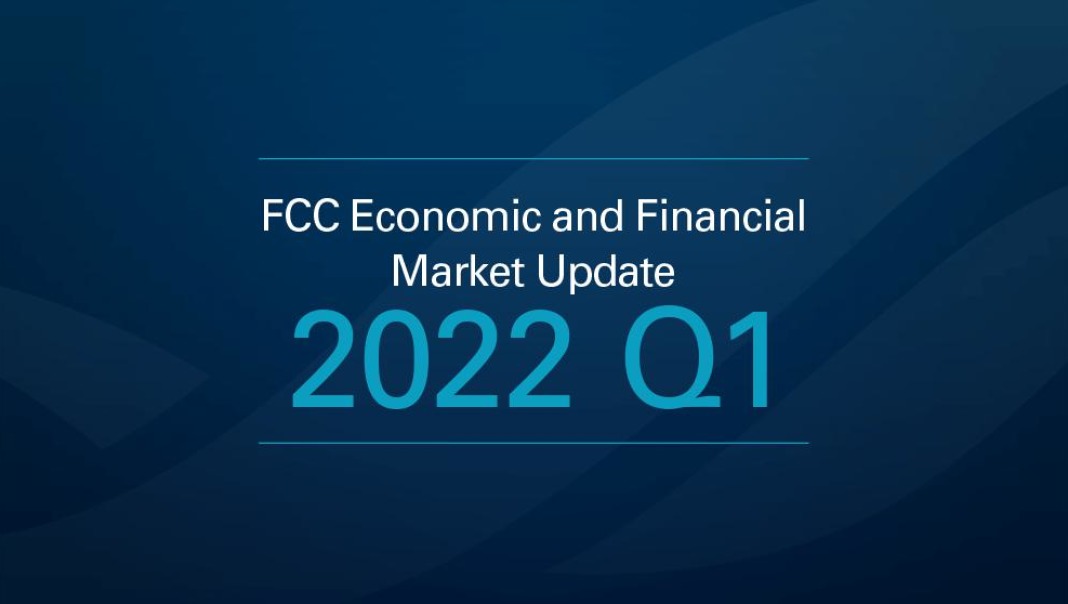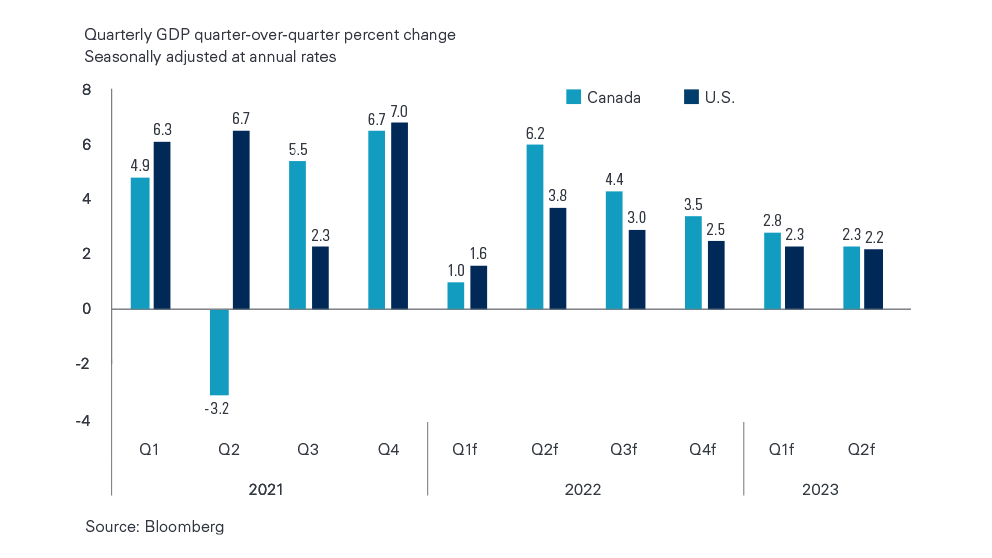Q1 2022 Macroeconomic snapshot: Rising rates are now a reality
Friday, March 11, 2022
Reference: FCC

Outlook
Canada’s economic growth is expected to be weaker in Q1 from Omicron and supply chain disruptions, compared to the second half of 2021. FCC Economics expects to see a strong rebound in Q2 and strong overall growth in 2022 as the demand for services increases with the re-opening of provincial economies. Challenges related to a tight labour market and supply chain bottlenecks are offset by strong exports and consumer spending. The Russian invasion of Ukraine will weaken global economic growth and contribute to further supply chain disruptions and higher energy prices. Inflation rose to decade highs in Q4 2021, and the Bank of Canada (BoC) is adamant about increasing its policy rate to combat inflation as the labour market indicators have mostly recovered to pre-COVID levels. The first increase in the overnight rate came on March 2, and FCC Economics expects the BoC to increase the overnight rate an additional 4 times by year-end.GDP
GDP was strong in Q4, growing at an annual rate of 6.7% over Q3. Consumer spending was robust as unemployment returned to pre-pandemic levels in December, and the labour force participation rate for individuals aged 25-54 was the highest on record at 88.4%. Higher oil, lumber and ag commodity prices and growing foreign demand supported exports.GDP growth is expected to slow in Q1 (Figure 1). Omicron has slowed spending and employment, primarily in food services, accommodations, and travel. In January, absenteeism at work was up 32% YoY, limiting productivity and disrupting transportation. GDP growth should pick up steam in Q2 as COVID restrictions lessen before moderating to 2-3% levels heading into 2023. The annual gain in 2022 is projected to be 3.8%, down from 4.6% in 2021.
Figure 1. GDP growth is expected to be modest in Q1 before hitting its 2022 peak in Q2

Central Bank Policy and Bond Markets
The Bank of Canada overnight rate
On March 2, the BoC increased its overnight rate to 0.50% from 0.25%. The consensus from financial markets is up to five additional 25bp rate hikes in 2022. Based on our observations, FCC Economics sees this as a slight overestimation. We believe there will be an additional four 25bps increases, bringing the rate to 1.5% at year-end (Table 1).The U.S. Federal Reserve (Fed) is expected to be similarly aggressive with rate hikes, projected to raise its policy rate to the top end range of 1.50% by end of the year. Inflation has been more prominent in the U.S., where it hit the highest level since 1982 in January at 7.5%.
Both central banks could be forced to raise rates faster if inflation continues to rise. Conversely, sanctions could cause global economic growth to slow down resulting in increased uncertainty and slow rate increases. Despite the uncertainty, it would be prudent for businesses to prepare for increases in borrowing costs this year... Read More
Sign up to stay connected
- News
- Property Alerts
- Save your favourite properties
- And more!
Joining Farm Marketer is free, easy and you can opt out at any time.
